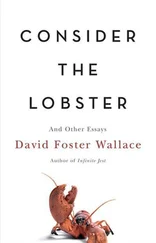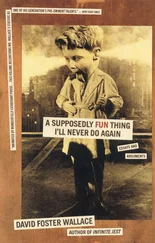David Wallace - The Pale King - An Unfinished Novel
Здесь есть возможность читать онлайн «David Wallace - The Pale King - An Unfinished Novel» весь текст электронной книги совершенно бесплатно (целиком полную версию без сокращений). В некоторых случаях можно слушать аудио, скачать через торрент в формате fb2 и присутствует краткое содержание. Год выпуска: 2011, Издательство: Little, Brown & Company, Жанр: Современная проза, на английском языке. Описание произведения, (предисловие) а так же отзывы посетителей доступны на портале библиотеки ЛибКат.
- Название:The Pale King: An Unfinished Novel
- Автор:
- Издательство:Little, Brown & Company
- Жанр:
- Год:2011
- ISBN:нет данных
- Рейтинг книги:3 / 5. Голосов: 1
-
Избранное:Добавить в избранное
- Отзывы:
-
Ваша оценка:
- 60
- 1
- 2
- 3
- 4
- 5
The Pale King: An Unfinished Novel: краткое содержание, описание и аннотация
Предлагаем к чтению аннотацию, описание, краткое содержание или предисловие (зависит от того, что написал сам автор книги «The Pale King: An Unfinished Novel»). Если вы не нашли необходимую информацию о книге — напишите в комментариях, мы постараемся отыскать её.
The Pale King
The Pale King: An Unfinished Novel — читать онлайн бесплатно полную книгу (весь текст) целиком
Ниже представлен текст книги, разбитый по страницам. Система сохранения места последней прочитанной страницы, позволяет с удобством читать онлайн бесплатно книгу «The Pale King: An Unfinished Novel», без необходимости каждый раз заново искать на чём Вы остановились. Поставьте закладку, и сможете в любой момент перейти на страницу, на которой закончили чтение.
Интервал:
Закладка:
At the IRS’s National Computer Center in Martinsburg WV, 5the ‘ghost conflation’ problem for employees with identical names had been recognized as early as December 1984—thanks mainly to a hideous mess involving two separate Mary A. Taylors at the Southeast Regional Service Center in Atlanta — and Technical Branch programmers were already in the process of inserting a block and reset sub-subroutine that overrode the go to subroutine for the thirty-two most common surnames in the United States: viz., Smith, Johnson, Williams, Brown, & c. But Wallace was, according to 1980 US Census figures, 6only the 104th most common American surname, way down the list between Sullivan and Cole; and any override of go to that countenanced more than thirty-two surnames ran a statistically significant risk of reintroducing the original ‘ghost redundancy’ problem. In short, the name David F. Wallace fell in that statistical middle area where the original debugging’s consequent ‘ghost conflation’ bug could still cause significant problems and woe, especially for any employee too new to understand why or whence these accusations of everything from contractual fraud to ‘impersonation of an immersive’ (that latter an unprecedented charge that may well have been simply made up out of whole cloth by Dick Tate’s hatchet men as a way of deflecting what at one point they feared might be construed as negligence or administrative error on the part of REC Personnel, a fear that even Mr. Stecyk, the DDP, conceded was simply bureaucratic paranoia, once the ‘unreal’ David Wallace [i.e., the author] 7had gotten in to see him and more or less thrown himself on his mercy).
§ 39
GS-9 Claude Sylvanshine, back in the Martinsburg Systems compound as part of the April run-up to his advance work at the Midwest REC, went twice into the directed-input tank and tried, under Reynolds’s audio supervision, running RFA 1on Post 047’s top brass, the first of which RFA sessions yielded some fruit. Sylvanshine got interpretable fact-sets on DeWitt Glendenning Jr.’s pathological hatred of mosquitoes born of his Tidewater childhood, his failed attempt to become a US Army Ranger in 1943, his violent allergy to shellfish, his evident belief that his genitals were somehow malformed, his run-in with the dreaded Internal Inspections Division while a District Audit Director in Cabin John MD, parts of the home and/or office address of his psychiatrist in suburban Joliet, his memorization of the birthday of every last member of the Midwest Regional Commissioner’s family, and a great deal of esoterica about home furniture-construction and — refinishing and power tools that led to an abrupt SDI 2into certain specs surrounding a male adult’s severed thumb. This leading some in Systems to conclude that current Midwest REC Director and Regional toady DeWitt ‘Dwitt’ Glendenning had lost or would shortly lose a thumb in some type of home woodworking accident, and to tailor certain plans and expectations around this fact.
The truth — which Claude Sylvanshine will and can never know despite the repeated column of figures on both the aerodynamics of arterial blood and the rates at which a 1420-rpm standing band-saw blade can cut through the various conic sections of a human hand of certain mass and angle — is that an adult severed thumb’s factual relevance was actually to the life and psyche of Leonard Stecyk, Post 047’s DDP, who as a practical matter undertook to do not only his own work but much of his superior’s. The severed-thumb incident figures in the psychic development that transformed L. M. Stecyk into one of the most brilliant and able Service administrators in the Region, though the thumb incident is by now buried deep in Mr. Stecyk’s unconscious, his conscious life dominated by the REC’s Personnel office and by issues surrounding the gathering storms in both Systems and Compliance.
The incident itself is not immediately relevant and so can be recounted quite fast. For reasons now lost in the administrative mists, Industrial Arts was then required of male tenth-graders across the upper Midwest, giving the Vocational Ed pupils a last chance to savage and torment the College Prep boys from whom they’d been (in Michigan) split off the previous year. And Leonard Stecyk had an especially hard time of it in Mr. Ingle’s third-hour Industrial Arts class at Charles E. Potter High School in the autumn of 1969. It was not just that at almost sixteen Stecyk was 5' 1" and 105 pounds soaking wet, which he was (soaking wet) when the boys in his PE class’s shower all urinated on him after knocking him to the tile floor, which ritual they called a Stecyk Special — he ending up the only boy in the history of Grand Rapids to carry an umbrella into a school’s showers. Nor was it a matter just of the special OSHA-approved safety goggles and special homemade carpenter’s apron inscribed in Palmer cursive with LEN’S THE NAME; WOOD’S THE GAME that he wore to class. Nor that third-hour IA featured two separate future convicted felons, one of whom had already served a week’s suspension for heating an ingot of cast iron red-hot with an acetylene torch, waiting just until the last color had vanished from it, and then casually asking Stecyk to go bring him that one ingot over by the scroll saw real quick. The real problem was practical: Leonard turned out to have no talent or affinity whatsoever for Industrial Arts, whether it came to basic dynamics or welding, rudimentary construction or custom carpentry. True, the kid’s drafting and measurement specs were, Mr. Ingle admitted, exceptionally (almost effeminately, he felt) neat and precise. It was with actual projects and operations of the machinery that Stecyk was terrible, whether it was cutting to an angle, following a pre-drawn jig, or even sanding smooth the base of the special pinewood cigar box that Mr. Ingle (who liked cigars) forced all the pupils to make for their fathers, but on which Stecyk’s apparently loose or insufficiently masculine grip caused the belt-sander to shoot the box like a piece of ordnance across the Industrial Arts classroom, where it exploded against the cement wall not ten feet from the head of Mr. Ingle, who told Stecyk (whom he despised without guilt or reservation) that the only reason he didn’t force him and his little apron over to Home Economics with the girls was that he’d probably burn the whole everloving school down! at which some of the larger and crueler tenth-grade boys (one of whom would be expelled the following autumn for not only bringing a USFWS bear trap onto school property but going so far as to open and set it — the dagger-sharp spring-loaded trap — outside the door to the vice principal’s office, where it had to be deactivated with the pole of a custodian’s push broom, which it snapped with a sound that caused students in classrooms all up and down the hall to duck and cover) actually pointed directly at Stecyk as they laughed.
On the other hand, it’s possible that the severed-thumb incident did not so much actually change or shape Leonard Stecyk’s character as alter his own perspectives on it (if any), as well as others’ perceptions of him. As most adults know, the distinctions between one’s essential character and value and people’s perceptions of that character/value are fuzzy and hard to delineate, especially in adolescence. There is also the fact that a certain amount of situational setup and context to the incident Leonard Stecyk no longer recalls, not even in dreams or peripheral flashes. It had to do with cutting a sheet of drywall into lathes or strips for some kind of reinforcement involving the framing and hanging of a door in an interior wall. The band saw was set in a broad metal table with gauges and calibrated clamps to hold what you were cutting just so while you pushed the piece carefully along the smooth surface so that the band saw’s high-speed blade cut along the pencil line you’d drawn after measuring at least twice. There were, of course, detailed safety procedures as codified by Mr. Ingle in both the mimeographed Shop Rules and several stenciled all-cap signs on and around the band saw’s rear housing, which procedures Leonard Stecyk had not only memorized but tried helpfully to point out some instances of typos or ambiguous phrasing in the terse imperatives of, which had caused one side of Mr. Ingle’s big face to start jumping and crinkling involuntarily, a notorious sign that the man was just barely keeping his temper under control. The reality behind the surfeit of signs and yellow caution lines painted on the shop room floor was that Mr. Ingle operated under great felt pressure and constant borderline frustration and rage, since it was his responsibility if anybody got hurt, and yet at the same time many of the kids in the classes were either inept effeminate ‘mathlete’ pansies like Stecyk and Moss here or else long-haired delinquents in army coats that sometimes came to class smelling of marijuana and peppermint schnapps, and screwed around with rules and equipment they didn’t have the sense to respect the dangerousness of, including standing around watching within the clearly marked yellow line to the side of the band saw and its unshielded blade despite the clearly painted instructions on both machine and floor to STAY BEHIND LINE WHEN IN OPERATION, where all it would then take is a careless shove or even gesture where you waved one of your arms around when standing in the unauthorized side area; and in illustrating this at the top of his lungs for maybe the fifth time this quarter as the sad excuse for kids stood at the yellow line and watched him exaggerate a childish gesture, his right hand inadvertently made contact with the blade of the band saw, which just as quickly as Mr. Ingle had promised it could, took off his thumb and the surrounding material from the interdigital webbing down to the abductor pollicis longus tendon, also opening the radial artery, which caused a tremendous fan of blood-spatter as Mr. Ingle brought the red thing to his chest and toppled sideways, gray with shock and the paralytic reflexes of trauma. As was more or less everyone else in the class — gray-faced, openmouthed — watching from the yellow line as blood from the radial and also first volar metacarpal arteries shot rhythmically up and out and spattered even some of the taller boys’ khaki coats and the control panel of the drill press against which they bumped as they stepped reflexively back. This was not the slow welling of a skinned knuckle or the trickle of a punched nose. This was arterial blood under great systolic pressure, which shot up and fanned out from where the teacher knelt cradling the hand against his chest with the other hand and staring at the phalanx of boys, mouthing something that could not be heard over the band saw’s A# scream, some of the College Prep boys’ faces also distended in screams which could be seen but not heard, a few others at the extreme back peeling off around the drill press’s clamps and running for the classroom door with their arms up and hands waving in the universal movement of blind panic, the rest splayed against the nearest peer or machine with their eyes wide and minds in deep neutral.
Читать дальшеИнтервал:
Закладка:
Похожие книги на «The Pale King: An Unfinished Novel»
Представляем Вашему вниманию похожие книги на «The Pale King: An Unfinished Novel» списком для выбора. Мы отобрали схожую по названию и смыслу литературу в надежде предоставить читателям больше вариантов отыскать новые, интересные, ещё непрочитанные произведения.
Обсуждение, отзывы о книге «The Pale King: An Unfinished Novel» и просто собственные мнения читателей. Оставьте ваши комментарии, напишите, что Вы думаете о произведении, его смысле или главных героях. Укажите что конкретно понравилось, а что нет, и почему Вы так считаете.












